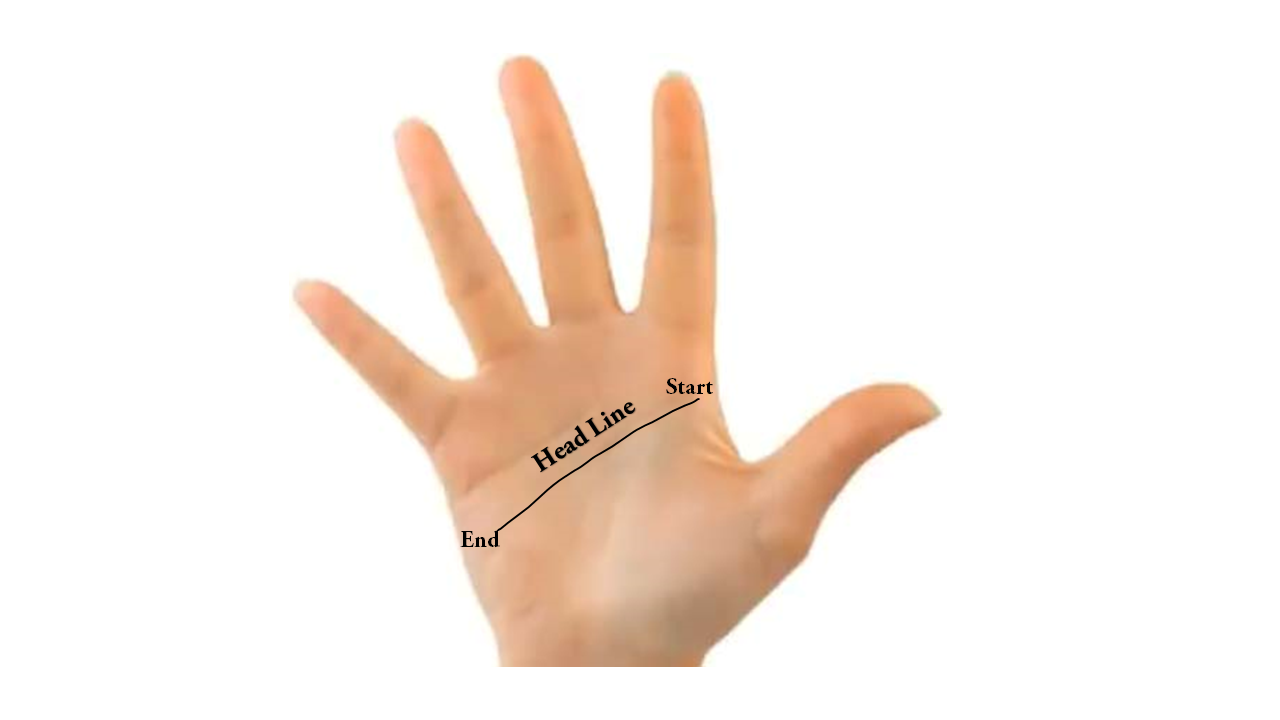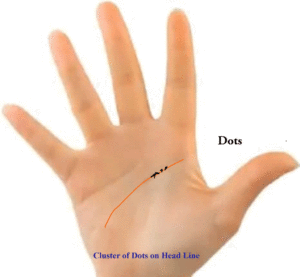In palmistry, dots or spots on the head line can carry various interpretations depending on their size, location, and context within the overall palm. Here are some possible interpretations:
Dots on Head Line are indicators of small problems in thinking processes or some issues related on mental stress even some injury above neck more specifically on head or near head portion. This is because head Line represent physical head as well as thinking process going on in the head part.
1. Small Dots:
Small dots on the head line are often considered minor obstacles or challenges in the individual’s thought processes. They may represent periods of mental fatigue, distraction, or minor setbacks in achieving goals. The impact of these dots is usually temporary and can be overcome with patience and perseverance.
2. Large Dots:
Larger dots or spots on the head line may indicate more significant disruptions or obstacles in the individual’s mental faculties. They could suggest periods of intense stress, cognitive overload, or health issues affecting cognitive function. Depending on their location and surrounding lines, they may point to specific areas of concern or potential challenges in life.
3. Isolated Dot:
If a single dot appears on the head line without any other nearby markings, it may represent a specific event or circumstance that has temporarily affected the individual’s mental clarity or focus. This could be a sudden realization, an unexpected setback, or a moment of clarity that leads to a change in perspective or direction.
 4. Cluster of Dots:
4. Cluster of Dots:
A cluster of dots or spots on the head line may indicate prolonged periods of mental strain, confusion, or uncertainty. The individual may feel overwhelmed by multiple responsibilities or challenges, leading to difficulty in maintaining clear thinking and focus. It’s essential to consider the size and density of the cluster, as well as its relationship to other lines and markings on the palm, for a more nuanced interpretation.
5. Dots at the Beginning or End:
Dots appearing at the beginning or end of the head line may have specific significance. A dot at the start of the head line could indicate early childhood experiences or genetic predispositions affecting cognitive development. A dot at the end of the head line may suggest challenges or transitions in later life that impact mental clarity or cognitive function.
6. Recurring Dots:
If dots appear repeatedly along the head line, it may indicate a recurring pattern of mental challenges or obstacles that the individual faces throughout their life. These could be related to external factors such as work or relationships, or internal factors such as anxiety or self-doubt.
